Ninety-five years ago, Benedict XVI was born on a Holy Satruday — which turned out to be a sign of divine providence. Eighty-three years later, in 2010, he was confronted with the most mysterious icon and relic of the night of Christ’s resurrection, the Turin Shroud….
By Michael Hesemann*
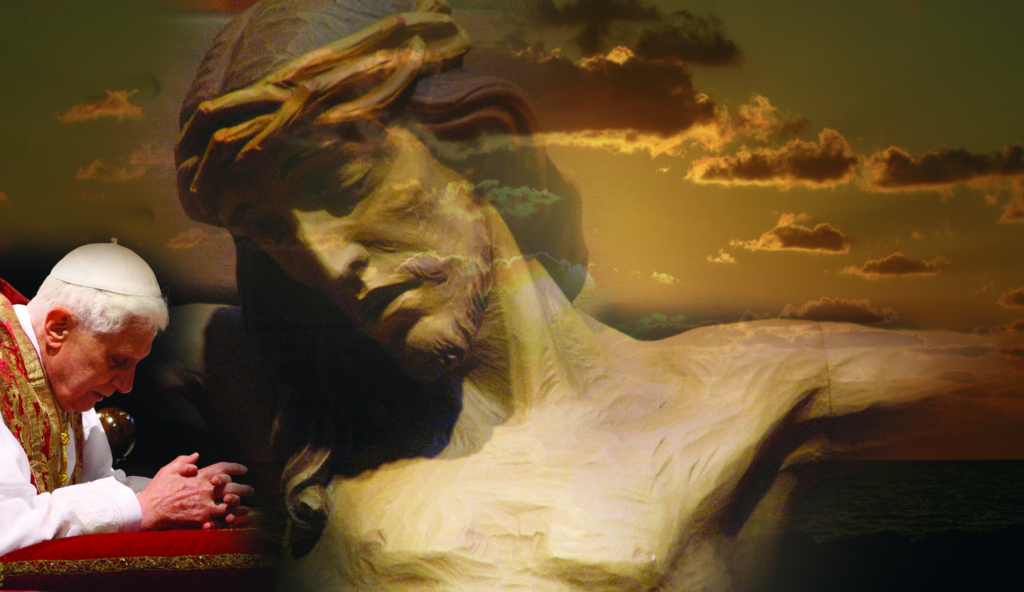
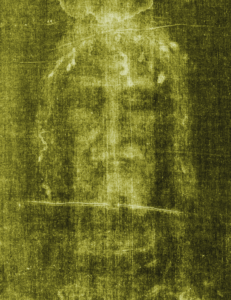 There is, of course, a reason why I am writing this as a historian and not as a theologian. At this point, I would like to remind you of the moment when Benedict XVI himself stood at the crossroads of history, including its auxiliary sciences, and the theology of Holy Saturday. That was a good 12 years ago, on May 2, 2010, when he stood in front of the Holy Shroud, the true “acheiropoieton” (“not painted by human hands”) icon of Holy Saturday in the Cathedral of Turin, in northern Italy. It is the image of overcoming pain and death, painted (or “written”) with the blood of the Passion and the light of the resurrection of Christ. Nowhere else has the whole humanity and divinity of Jesus, of which the Council of Chalcedon (451 A.D.) spoke, become so visible, comprehensible and touchable.
There is, of course, a reason why I am writing this as a historian and not as a theologian. At this point, I would like to remind you of the moment when Benedict XVI himself stood at the crossroads of history, including its auxiliary sciences, and the theology of Holy Saturday. That was a good 12 years ago, on May 2, 2010, when he stood in front of the Holy Shroud, the true “acheiropoieton” (“not painted by human hands”) icon of Holy Saturday in the Cathedral of Turin, in northern Italy. It is the image of overcoming pain and death, painted (or “written”) with the blood of the Passion and the light of the resurrection of Christ. Nowhere else has the whole humanity and divinity of Jesus, of which the Council of Chalcedon (451 A.D.) spoke, become so visible, comprehensible and touchable.
Here is the “Man of Sorrows” from the prophecy of Isaiah (Isaiah 53:3), marked by His precious blood which He shed for our salvation: the 117 dumbbell-shaped wounds, caused by the 39 (“forty less one”) lashes with the leather whip, to which the Romans attached three dumbbell-shaped pieces of lead to cut the skin (39 lashes times 3 pieces of lead causing a wound each time, total 117 wounds — the same number found on the Shroud). They alone testify that the torture was carried out by Romans with a Roman instrument of punishment but with regard to the Mosaic law, which prescribed a maximum of 40 blows (see Deuteronomy 25:3). In practice, this became the “40 strokes less one,” which Paul also mentions in Corinthians (2 Cor 11:24), probably because one did not want to disobey God in the event that one miscounted. Such a “39 lash maximum” was unknown to the Romans, and it is only conceivable between AD 6 and 66, when Judaea, originally Herod’s vassal kingdom, was a Roman protectorate, rather than a conquered enemy nation, and so during those years the peculiarities of Jewish law were respected by the Romans.
Then the marks of the crown of thorns, which, unlike in Christian iconography, was a hood of thorns affecting the whole scalp: they alone prove that the “man on the shroud” was Jesus of Nazareth. None of the hundreds of thousands of unfortunates who were scourged and crucified by the Romans ever had such a crown put on their heads, except the one who was derided as the “King of the Jews.” Finally, there are the abrasions on the knees, cheek and nose, which testify to the three falls on the way to the Crucifixion site; scientists found particles of street dust amidst the blood crusts, which, like the street dust on the footprints of the soles of the feet, could be clearly assigned to the region around Jerusalem according to its geological signature on the element table. Then the pierced feet and wrists (the latter again in a departure from conventional iconography) proving that the “man on the Shroud” ended up on the cross, where he died after hours of agony.
This agony is reflected in the pathological findings concerning the side wound, which correspond to the biblical description. St. John tells us that “blood and water” (John 19:34) actually flowed from Christ’s side when the centurion struck him with a spear. This is medically plausible: it was lung fluid (water) accumulated during the inhuman, excruciating exertions that gradually challenged the circulatory system up to its collapse, and blood from the atrium or upper chamber of the heart, which the legionnaire’s lance hit after penetrating the lungs. The pattern of the bloodstains on the Shroud forms the basis for a “Way of the Cross (Via crucis) in one picture,” which can only be decoded and deciphered with the help of science — in this case, forensic pathology.
But while any mortal, if he — God forbid! — would have to suffer something similar, would also leave comparable traces of blood, something else makes the linen Shroud of Turin a mystery. The real “secret of the Shroud” is the body image, that apparent cast of a human body from the front as well as the back, lying outstretched, hands placed over the pubic area, with clear signs of rigor mortis (“stiffness of death”). We have known since the photos taken by the Italian photographer Secondo Pia (1898) that this body image has all the properties of a photographic negative, and since John Jackson (1978) that it also contains 3D information, i.e. it is comparable to a holograph. The most fanciful theories have been put forward to explain it as the work of an artist or an impression of the spices with which the body was said to have been embalmed — to no avail! The only thing that is certain is that another shroud with comparable traces has never been discovered in the 5,000-year-history of human sepulchral culture. So we are dealing here with what quantum physics would call a “singularity.”
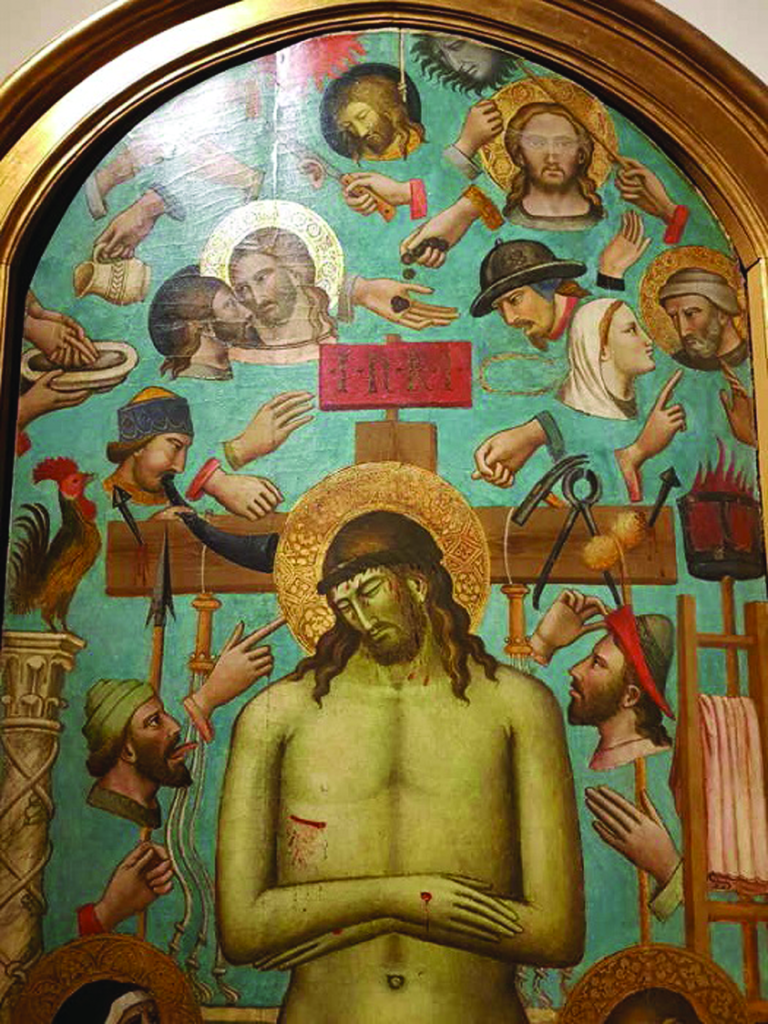
Christ of Pity among the Symbols of the Passion, by Pietro Gerini (1340-1414, Florence), now in the National Museum of Medieval and Modern Art in Arezzo, Italy, halfway between Assisi and Florence
In fact, a thorough examination of the Shroud of Turin using electron microscopes as early as 1978 revealed that this body image exists only on the uppermost fibers of the linen threads from which the Shroud was woven. In this thin layer, finer than the skin of a soap bubble, the fibers have yellowed to varying degrees. Yellowing is always a consequence of radiation. But this radiation could not have been directed at the body from outside, because then it would have cast shadows on all uneven places; it must have emanated from the body itself. Since Einstein, we know that all matter is just “frozen energy” and that, comparable to the moment of nuclear fission, energy is released when this bond is broken. Well-known physicists such as Prof. John Jackson, Prof. Giulio Fanti, Prof. Eberhard Lindner from Karlsruhe, Germany, and others are convinced that the image of the body on the Shroud is, so to speak, a “photograph” that was created when the cloth literally fell through the body, when the body turned into energy and released radiation. As fantastic as this sounds, it would perfectly explain the present finding.
Italian scientists achieved a comparable yellowing effect when they bombarded a piece of linen with laser light in the ultraviolet spectrum for hours. However, if the image formation process took place in a matter of seconds (as evidently is the case of the Shroud), according to 2011 calculations by experts from the Italian ENEA (“National Authority for New Technologies, Energy and Sustainable Economic Development”), an energy output of 2000 MW/cm2, which would be 17000 cm2 = 34,000 billion watts, would be required, more than any power plant on earth could produce. But with God, as we know, nothing is impossible.
A major theme in the teachings of Joseph Ratzinger/Benedict XVI is the reconciliation of faith and reason. The Shroud of Turin was examined using methods of interdisciplinary research and science, and a hypothesis was formulated as to how its image came about. Experimental verification is impossible because it exceeds human possibilities, which is where science reaches its limits. This is where faith has to take over.
For 1800 years, people have venerated the Shroud of Turin without understanding its image-creation process. Then came science and, in the course of the Enlightenment, declared all relics a priori to be pious forgeries, including, of course (and especially) the Shroud. “God is dead” was the dogma of many natural scientists — or at least He retired, became a Deus Emeritus after creation, as the Deists among the Enlighteners believed.
That’s why I like to compare the Shroud of Turin to a time capsule. Only today, in this time which ignores God, in which science has long since become a substitute religion for many, it is precisely men of science who accept Him again and fall on their knees before Him: because all their scientific knowledge has reached its limits when confronted with His Image, just as the Apostle Thomas first had to see and touch the wounds of the Lord in order to fall on his knees and pronounce the most beautiful creed in the entire Gospel of John: “My Lord and my God!” (John 20:28). The struggle of the first theologians, the apostles, to understand what had happened before their eyes on Good Friday had come to an end on this second Sunday after Easter. Theology is a science of recognition; its goal is the knowledge of God.
Only then did Peter, John and James understand what had confused them so much back on Mount Tabor that they wanted to build huts for Moses and Elijah when they saw the Lord transfigured. There, becoming pure light, He anticipated what would happen on the Easter Vigil in the darkness of the tomb, hidden from their sight: “His face shone like the sun, and His clothes became white as light,” Matthew wrote (17:2).
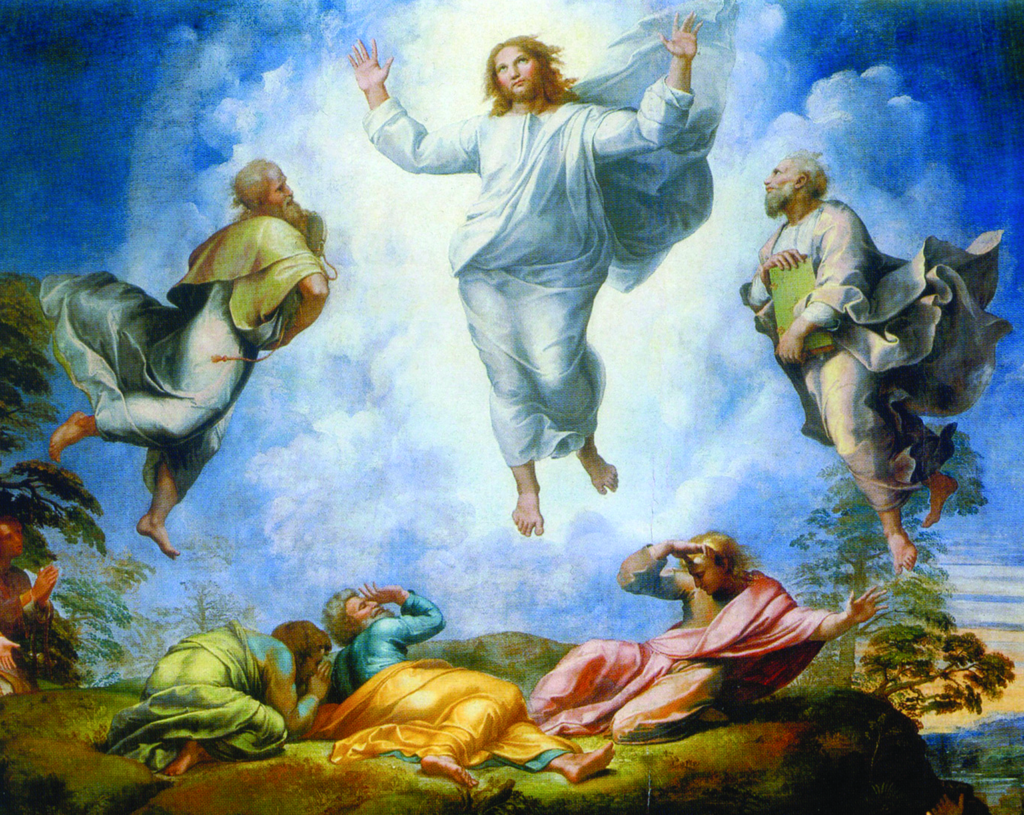
The Transfiguration by Raphael, Pinacoteca Vaticana, Vatican City
In the Transfiguration, He anticipated what would happen on the Easter Vigil in the darkness of the tomb: “His face shone like the sun, and His clothes became white as light,” Matthew wrote (17:2)
In his second letter, Peter, one of the eyewitnesses, describes what happened on Mount Tabor and he also uses the metaphor of light: “For it is a light that shines in a dark place”(2 Peter 1:19).
But above all he testifies: “For we did not follow any cleverly devised story when we announced to you the mighty advent of Jesus Christ our Lord, but we were eyewitnesses of His power and greatness. He received honor and glory from God the Father.” (2 Peter 1:16-17)
Our faith is based on revealed truth, our Church is founded by the witnesses of His glory, and it calls us all to become Cooperatores veritatis (“Co-workers of the truth”) as Benedict XVI’s episcopal and papal motto is known to be. But that is exactly the message of the icon of Holy Saturday and thus of Holy Saturday itself, whose light it wrote. He himself recognized this when on May 2, 2010, in the face of this most glorious and mysterious icon of Christianity, Benedict XVI stated: “This is the mystery of Holy Saturday! Truly from there, from the darkness of the death of the Son of God, the light of a new hope gleamed: the light of the Resurrection. And it seems to me that, looking at this sacred Cloth through the eyes of faith, one may perceive something of this light.”
I used the image of the “time capsule” above. Here, too, the work of divine providence is evident. It is precisely in our time of apostasy, perhaps the greatest crisis of faith and forgetfulness of God in history, in which most people live as if God did not exist, that the high priests of their substitute religion, namely scientists, come and proclaim the old Easter message of the Church.
It’s true! Christ has risen from the dead!
He is risen truly, so truly that the light of His resurrection burned His image into the linen. On the night of Holy Saturday, the light has conquered the darkness forever, life has conquered death!
In my opinion, it is also no coincidence that this insight found its maturity and rounding off during the pontificate of Benedict XVI, and that it was he who, perhaps unconsciously, in his meditation on the “light of resurrection,” built a bridge between the findings of natural science and of theology, and thus let faith and reason equally take the course towards Easter.
He is the Pope of Holy Saturday. After the “second Good Friday” — the renewed crucifixion of Jesus by the totalitarian regimes of the 20th century, which created a “Golgotha” of our time in Auschwitz (to quote St. John Paul II) —we are experiencing today, in the beginning of the 21st century, the global Holy Saturday, the time of doubts, dark thoughts, even apostasy.
Christ himself was mocked and accused like the disciples who were about to flee Jerusalem, where they feared worse. But when the night was at its darkest, in the grave of God, who only seemed dead and written off by society, a light shone that changed everything. It is this light of truth that also gives us hope and orientation at this time. Because as Christians we know that the dark night of Holy Saturday is followed by the bright light of Easter morning — and then the Easter jubilation fills the world.
*Dr. Michael Hesemann, 58, is a German historian, author of 45 books, mostly on Church history. He has been accredited to the Holy See Press Office since 1998 and has done research in the Vatican archives since 2009. His discoveries on Pius XII’s activities in saving almost a million Jews from the Holocaust, subject of his upcoming book The Pope and the Holocaust (Ignatius Press), and his study of the Armenian Genocide, have attracted international attention. An expert on Christian relics, including the Shroud of Turin, he accompanied Pope Benedict XVI on his trips to Germany and the Holy Land. In 2011 he wrote, with Msgr. Georg Ratzinger, the international bestseller My Brother, the Pope.

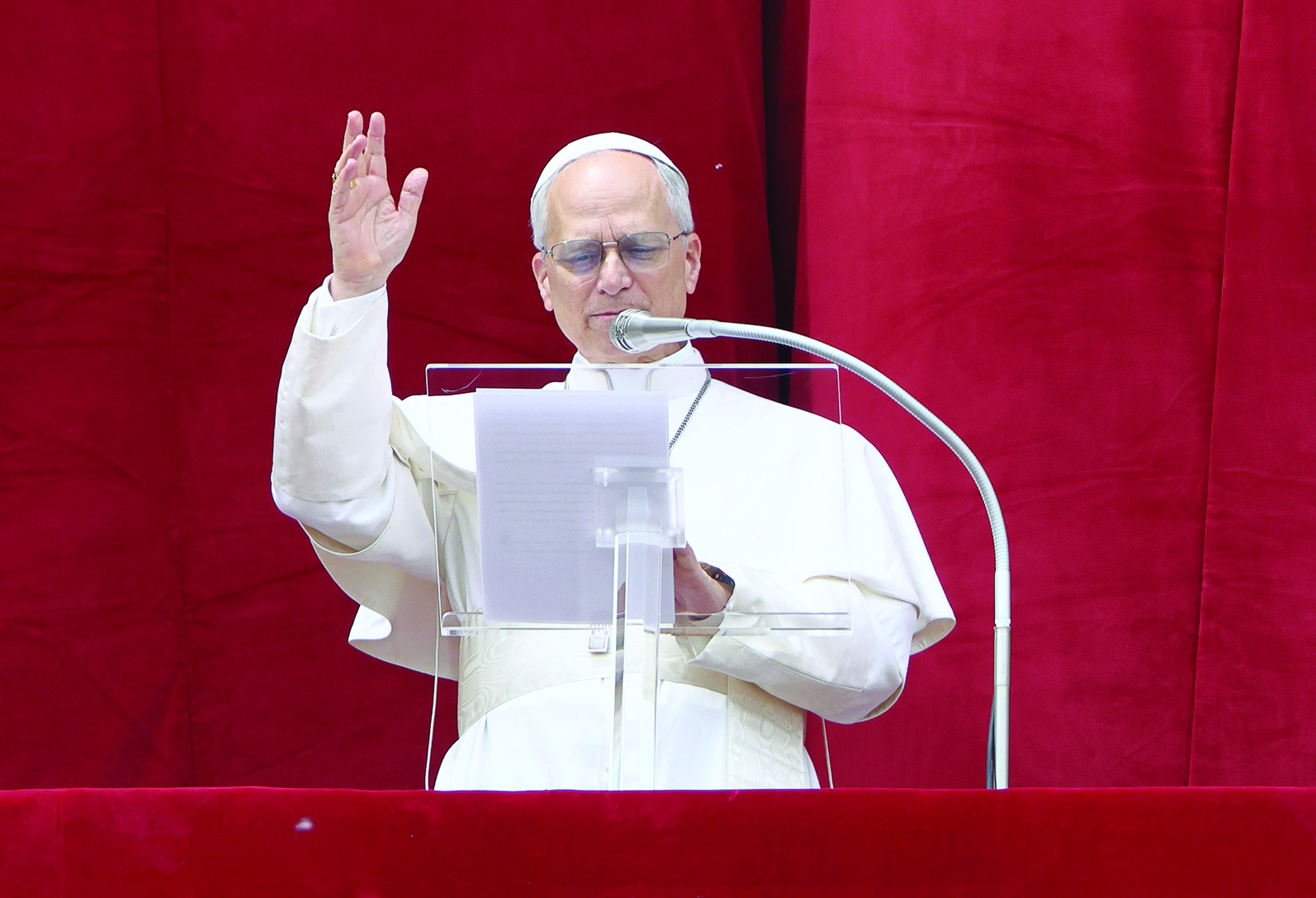

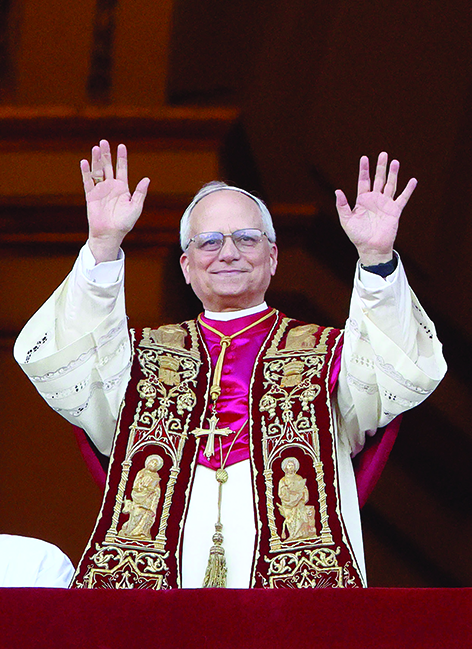
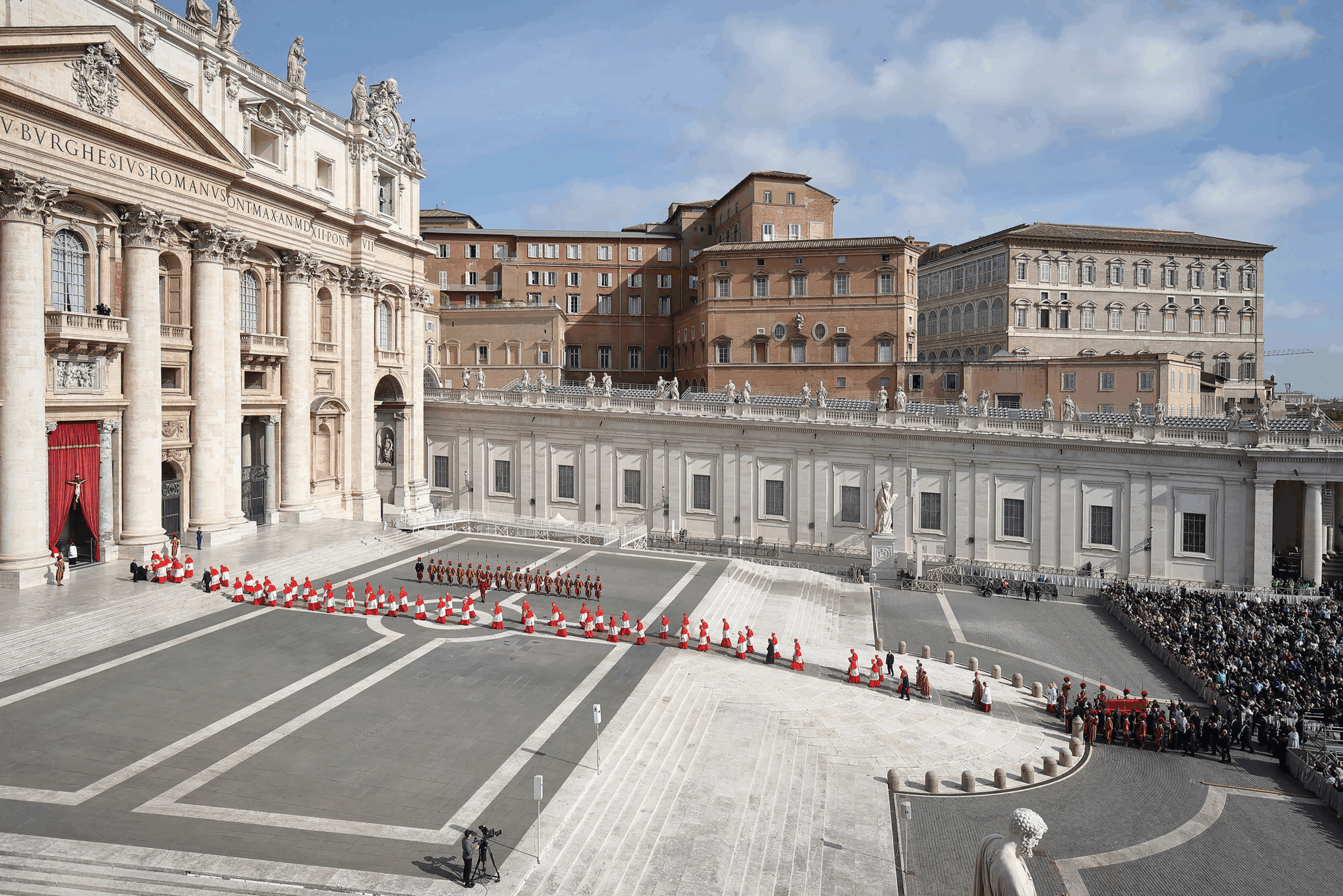
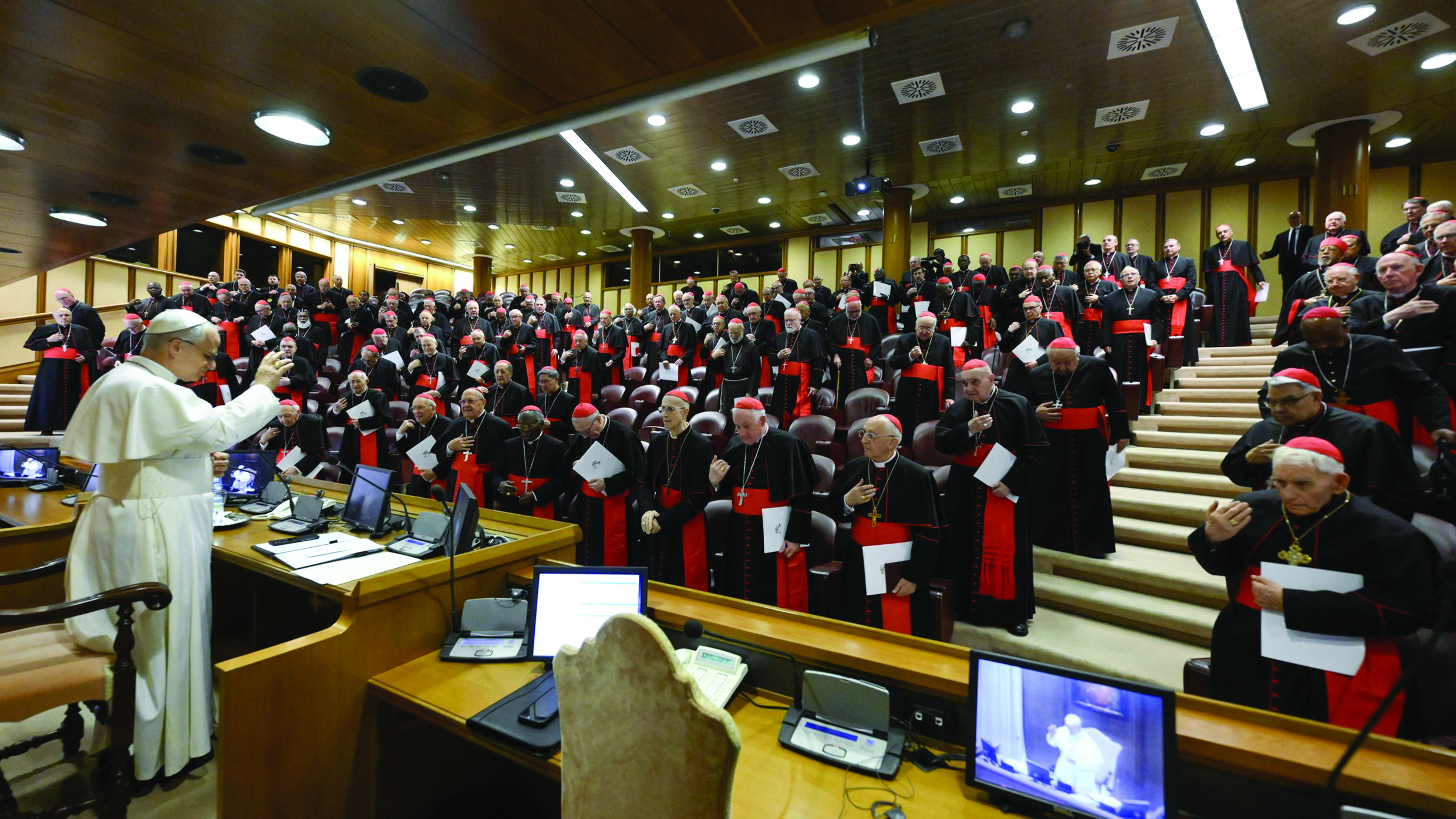
Facebook Comments